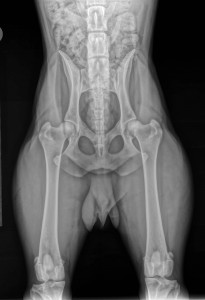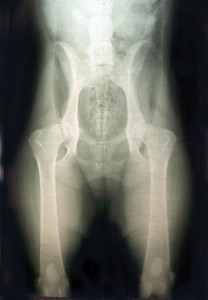

Hip dysplasia, a combination of hip joint laxity and joint degeneration, is a multifactorial disease arising from a combination of genetic and environmental factors. The disease is genetically predisposed but environmental factors including level and type of exercise, nutrition, and sexual sterilization have bearing on the development and progression of HD. Having hip dysplasia is a risk factor for also having elbow dysplasia; the more serious the condition the higher the risk.
Some HD-affected dogs will show little or no signs of lameness while others will be severely impacted at an early age. Sometimes orthopedic surgery can relieve symptoms, but the procedures are expensive.
Dysplastic dogs can be produced out of several generations of dogs that have been screened and found free of HD. Therefore it is necessary to review the hip status of collateral relatives (those close to but not appearing on a standard pedigree) to determine the level of genetic risk behind any given dog.
Accurate family history can be hard to come by, particularly in the US where open reporting of hip screen results is not required. In addition, most puppies sold into non-breeding homes will not have their hip status determined. All Australian Shepherds used for breeding should have their hips screened. When a breeder becomes aware that he has produced an HD-affected dog, he should make that information openly available through having a formal screening done through a system that allows or requires open listing, by posting the information on his website, or by seeing that the report is submitted to ASHGI’s IDASH Open Health Database.
